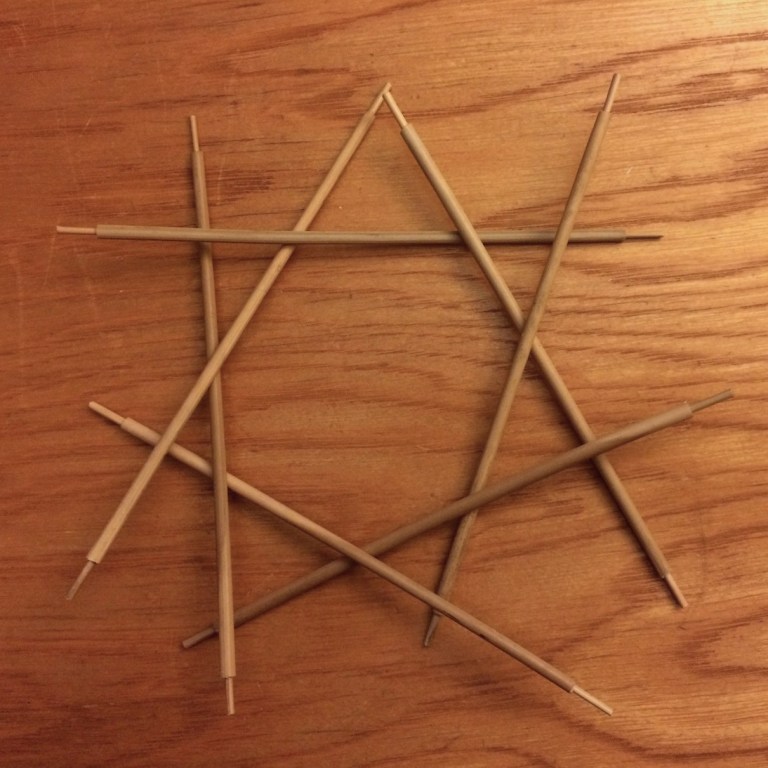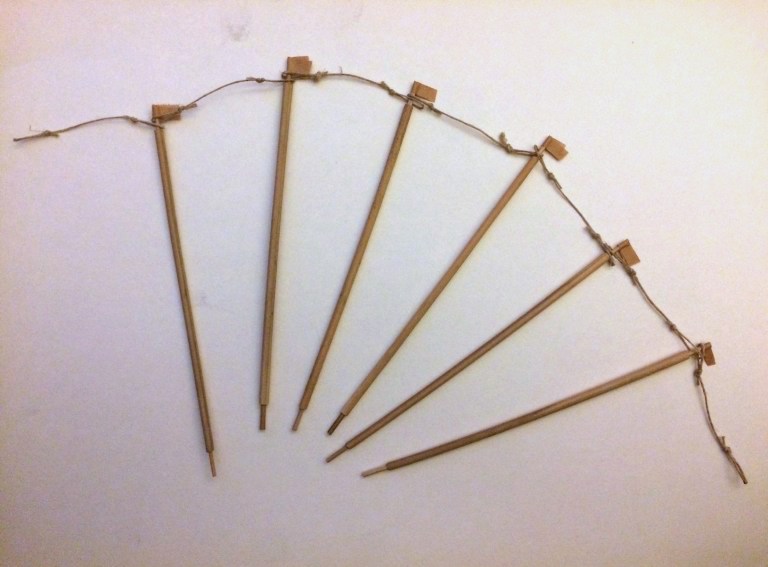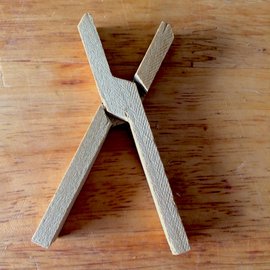Weightless Wreath
This sculpture is a modern take on a traditional ornament. It is both familiar and unfamiliar at the same time.
It can be called a wreath in the sense that it is a circular arrangement of plant matter made for aesthetic purposes. It can also be called a tensegrity, or floating compression, in the sense that it is a mathematical arrangement of sticks and strings which holds itself together using a counterbalancing network of tension and compression.
It is lovely to think about. It is lovely to look at. It can stimulate multiple parts of our minds all at once.
I recommend hanging it vertically on a wall or door, at eye level, so that when you face it you can look into its empty center. Just as with jazz, it is the empty spaces between the notes which make the music great, not just the notes themselves. As you can see, this sculpture is full of jazz.

8 x 8 x 4 inches
Bamboo twigs and hemp twine
I built it with love, and assistance from Savina. It is composed of natural materials.
To begin, I selected seven twigs to use for the struts, cut them to length, and then found fourteen smaller twigs which would fit into the ends of the main twigs, to form studs for holding the string ends in place. Each stud was chosen carefully for a precise fit into the end of each strut. A whole bag of bamboo twigs of varying thicknesses made this job pretty easy. Bamboo occurs naturally with an infinite variety of thicknesses, and each portion has a slight taper as well, so you can mate pieces quite snugly, like sealing a wine bottle with a cork.

Then, I tied 14 equal lengths of string with fixed loops on the ends, using the overhand knot on a bight. These will form the fixed tendons on the two rims of the cylindrical structure. I pretty much guessed at the length, and it turned out I was lucky in the end. What I did was measured the seven distances between strut ends with the sticks arranged as in the above photo, and took their average.

Then, assembly begins. I knew that each fixed tendon would have a tendency to fall off during the "raising" of this sculpture, so I added tape flags to the end of each stud to contain them.

Then, with four hands (two from Savina and two from me) we dexterously add seven rubber bands as temporary edge tendons, and the sculpture comes to life. It took us a few tries to get this assembled and stable.

Then one by one, each rubber band is replaced by an adjustable hemp tendon. This is built in two parts: (1) A lower portion which is a length with fixed loops on each end, overhands on a bight again. (2) An upper portion which is a longer length with only one fixed loop, overhand on a bight, and one free end. The free end meets one of the fixed loops in the middle and can be wielded like a pulley, and then stopped off with an overhand slip knot. Here is a closeup with one of the adjustable tendons highlighted:

Then I go through and tune the tensegrity by adjusting the tension on each. I want it to be tight, but not too tight. I also want each of the top and bottom faces of the cylinder to be close to parallel, in other words, not a lop-sided cylinder.
Once I'm happy with the tension all around, I lock it in by pulling through the free end of each overhand slip knot. Now each overhand slip knot has become a plain overhand knot, and thus fixed for good. The tension in this sculpture is no longer adjustable. Only time, and changes in the weather, will adjust its tension from here on out.
Finally I trim the free ends for each locked in overhand knot, and construction is done.

The artist Kenneth Snelson made a career for himself building tensegrities large and small with space-age steel and aluminum. But here, you have one built with humble plant matter, which I find gives a special beauty and appeal. Snelson's are monumental, this one is artisanal.

